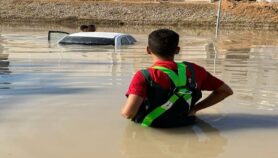By: T.V. Padma
Send to a friend
The details you provide on this page will not be used to send unsolicited email, and will not be sold to a 3rd party. See privacy policy.
[NEW DELHI] The effects of the 2004 tsunami are still being felt in coastal Sri Lanka, where supplies of drinking water are badly contaminated with salt, say scientists.
The findings were published yesterday (9 May) in Water Resources Research by an international team of scientists who surveyed the coast from February to September 2005.
Most people in the area get their water from shallow, hand-dug wells. When the tsunami struck, about 40,000 of the wells were destroyed or contaminated as the sea flooded land and seeped into groundwater (see Sri Lankan crops and water hit by tsunami salt).
Local people’s attempts to pump seawater out of the wells have proved counter-productive, causing the weak-walled structures to collapse and leading to yet more seawater entering the groundwater.
Most coastal groundwater is stored in sandy aquifers that are replenished by the monsoon rains.
But the scientists say this process is taking longer than normal as the worst hit regions have not had adequate rainfall for the past year, and salt levels are declining extremely slowly in some wells.
Although the December 2005 monsoon rains were substantial, it will take many more monsoon seasons before the aquifers become fully recharged, they say.
The team says documenting the impacts of tsunamis, storm surges, cyclones and rising sea levels on water supplies is the first step towards developing international guidelines for treating contaminated groundwater sources.
Plans are underway to provide piped water to the affected coastal areas.
Link to abstract of paper in Water Resources Research
Reference: Water Resources Research 42, W05201 (2006)













